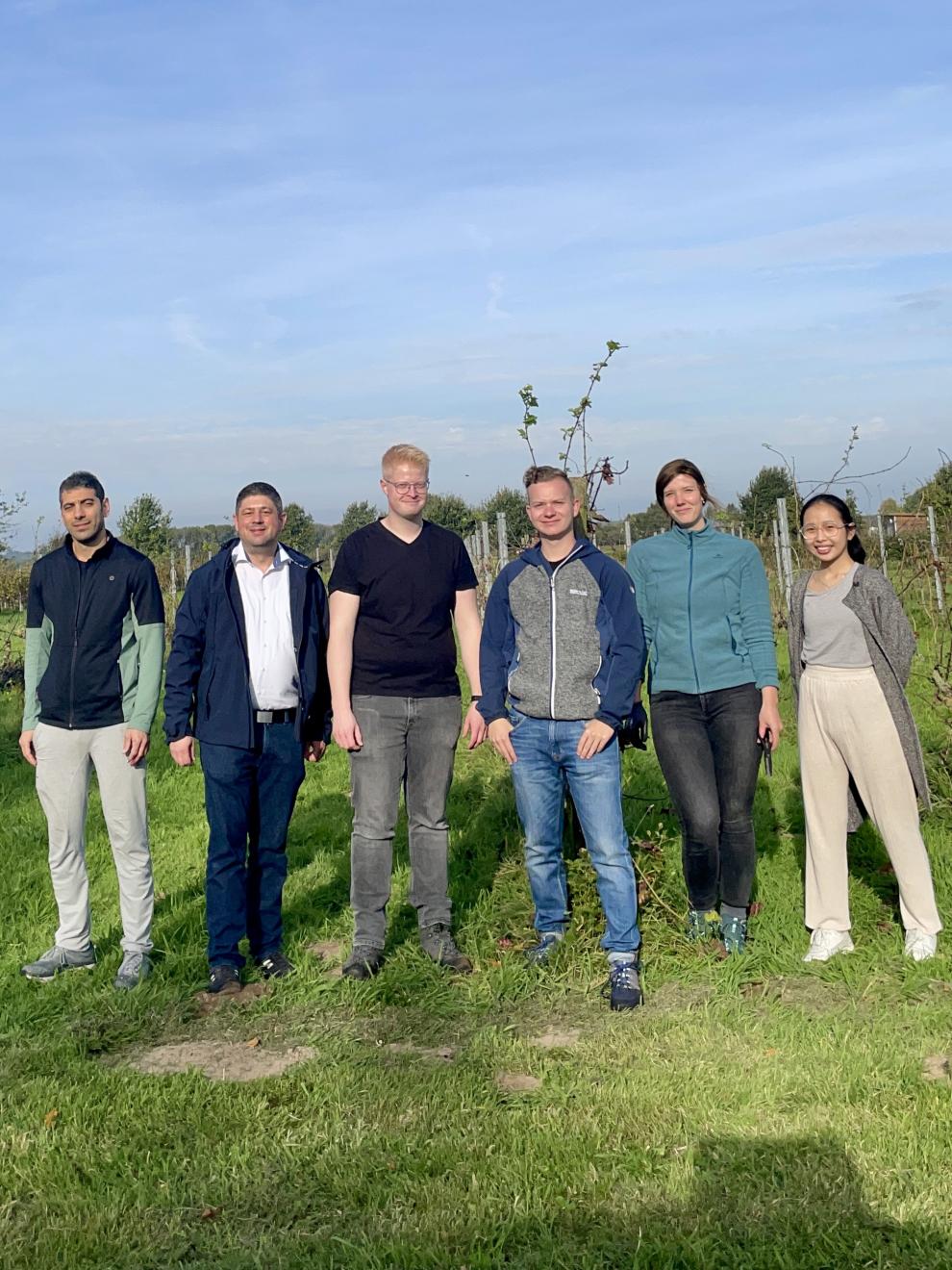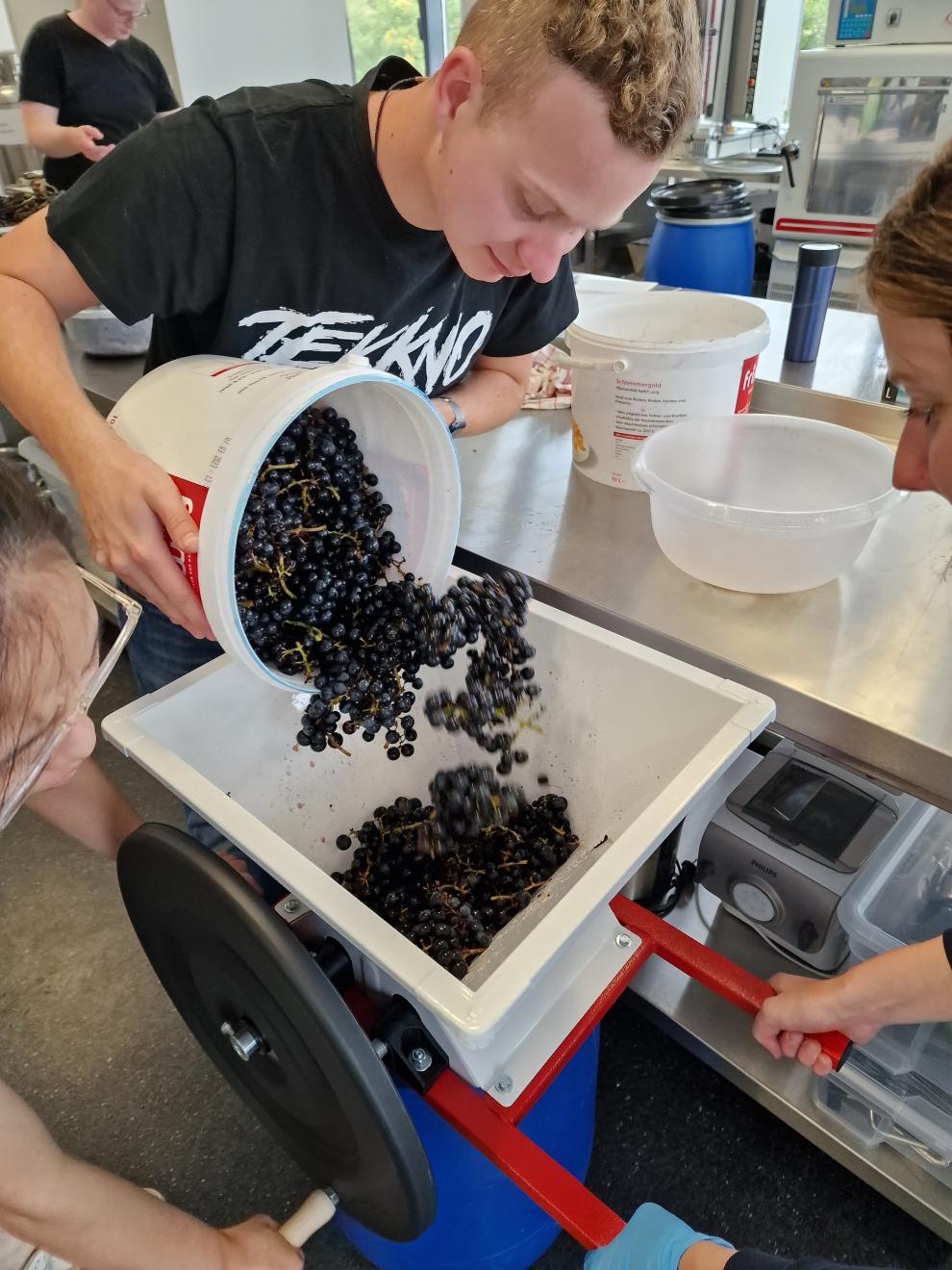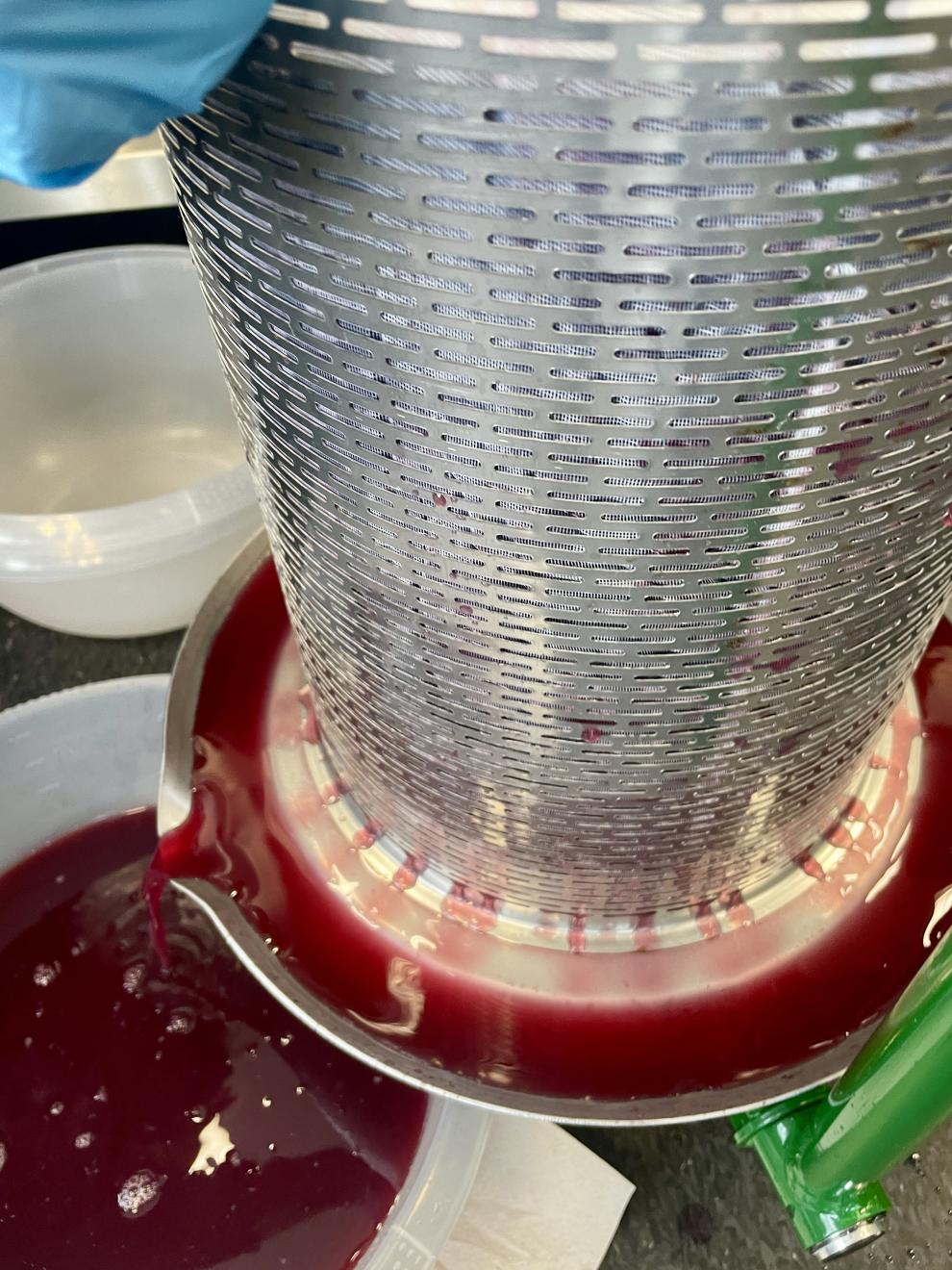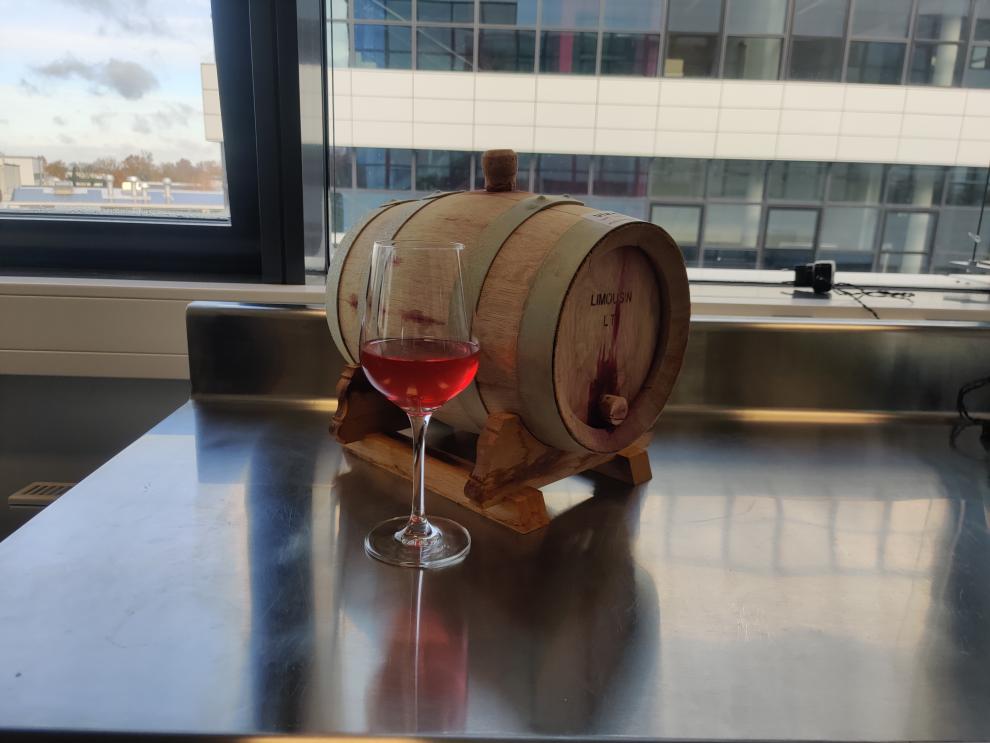The year in review: Students of the Master's program in Food Science produce "Rosé wine from the Lower Rhine"
As part of their applied research project, students on the Master's degree course in Food Science were able to harvest the dark blue wine grapes from a "vineyard" belonging to winegrower Leon Masselink from Wijngoed Montferland in Gendringen (Netherlands) in mid-October.
Donation and project goal
Prof. Dr. Florian Kugler, course director and supervisor of the project: "Due to the slightly too low grape sugar content, the winemaker was unable to use the grapes himself and therefore donated them to the course for use in the so-called "Applied Research Project", an integral part of the Master's course curriculum. We were very pleased about this donation, as it allows us to offer students the opportunity to take control of the raw material's journey from harvest to the end product; it also demonstrates once again the close ties between the Master's degree program in Food Science and the region."
Production process and training experience
The students' task was to produce a drinkable rosé wine from the raw material despite the relatively low grape sugar content. Various treatment methods used during the production process and different storage conditions (in stainless steel or wooden barrels) produced interesting results during an initial tasting. The students were not only impressed by the beautiful light red color, which was particularly noticeable after the layer filtration of the fermented must, but also by how well the wood note was perceptible due to the storage of the fermented batch in an oak barrel. Prof. Kugler: "I am delighted with the great commitment and enthusiasm with which the students are carrying out the wine project in a region that has only begun to make headlines with its viticulture in recent decades. As a South German who grew up in a region where Württemberg wines are grown on slopes, I was rather hesitant to use the term "vineyard" at the beginning of the project, as the vines that the students were allowed to harvest are located on a rather flat area and are only about 13 meters above sea level. In fact, however, the term "vineyard" is also used for flat areas."
Expert support and further processing
The project is also supported by Dr. Marc-Kevin Zinn, whose experience with alcoholic fermentation in the production of distillates and his additional qualification as a fine brandy sommelier provide advice and assistance. In a further step, he will mash and ferment the grape pomace residues with the students and produce a grape pomace brandy from them. We can't wait to see the result!




